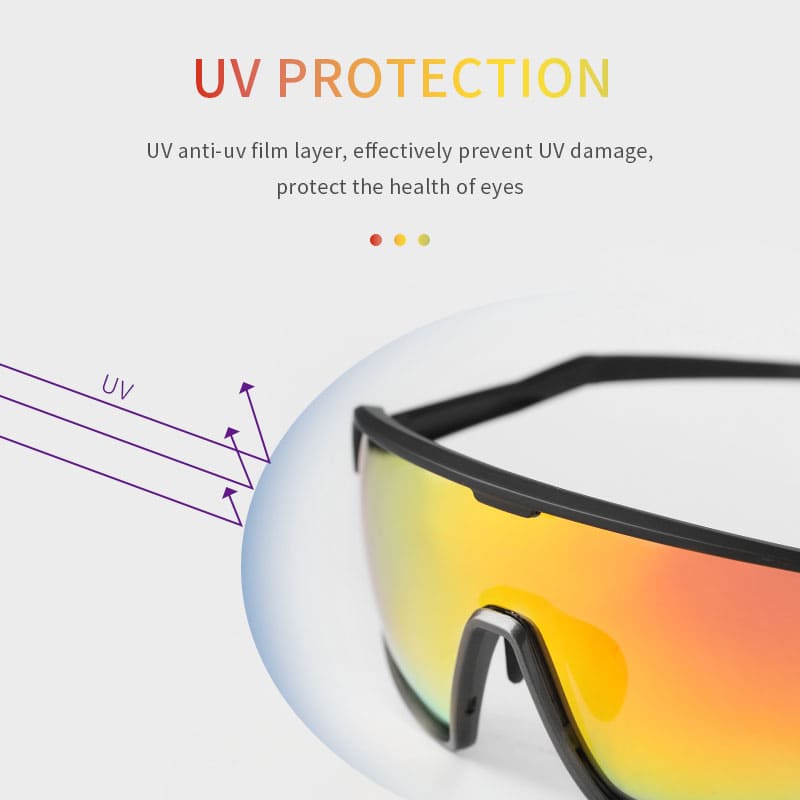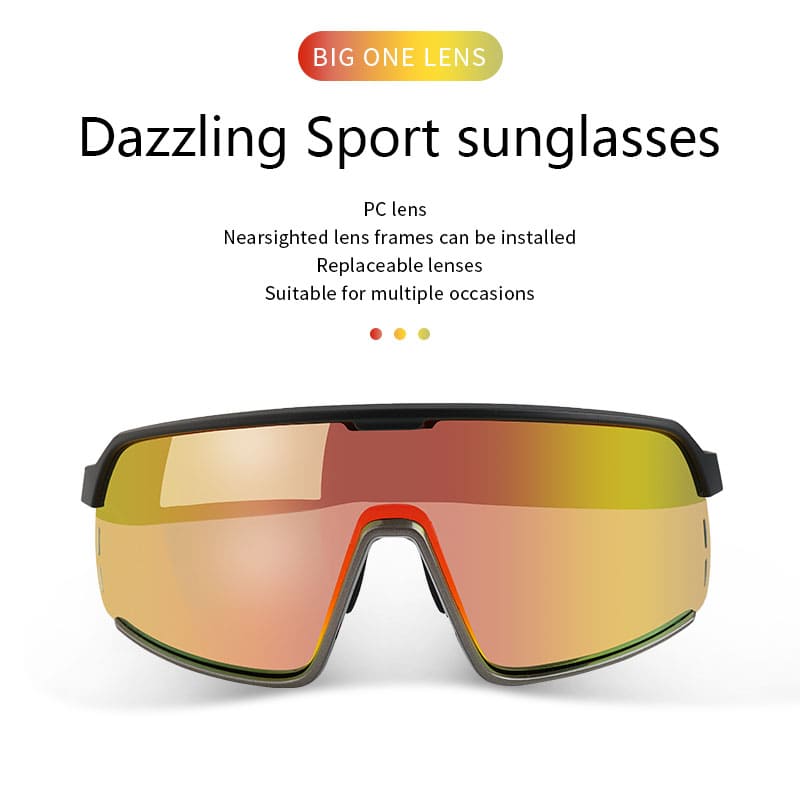Importance of Wearing Cycling Sunglasses
As cyclists, we rely heavily on our eyesight to navigate roads and trails, spot potential hazards, and simply enjoy the scenery. However, our eyes are vulnerable to damage from the elements and demands of cycling without protection. Wearing cycling sunglasses can provide a protective barrier between your eyes and the world around you that all cyclists should take advantage of.
Shield from UV Rays
The sun’s UV radiation reaches your eyes even on cloudy days and can cause long-term damage over years of cycling. UV exposure is a leading cause of cataracts and other vision issues. Cycling sunglasses block UVA and UVB rays with protective lens coatings to prevent damage from UV radiation and maintain eye health. Your vision is too important to expose to UV risk over the long run.

Reduce Glare
Glare from the sunlight reflecting off surfaces around you causes you to squint and can obstruct your view of the road ahead. Cycling sunglasses minimize glare through polarized lenses and tints that block excess bright light. By reducing glare, cycling sunglasses give you a clearer, uninterrupted view of your riding terrain and a safer cycling experience overall. You’ll no longer have to look away from the road due to blinding brightness.
Protect from Debris
Without eye protection, dust, dirt, insects and other airborne particles can fly into your eyes while cycling, causing irritation, tearing and even injury. Cycling sunglasses act as a wrap-around shield preventing wind and debris from reaching your eyes. Their snug yet comfortable fit and curved lens shape block the elements from all sides. You can cycle with peace of mind that your eyes are protected from whatever may come your way.
Enhance Contrast and Depth Perception
Cycling sunglasses are available with specialized lenses tailored for cycling that provide increased contrast, making hazards and road changes easier to spot. Some lenses also enhance depth perception, giving cyclists an advantage by making terrain appear more three-dimensional. Lens tints for specific lighting conditions, like yellow tints for cloudy days or photochromatic lenses that adapt to the light, also benefit cyclists’ vision.
Cycling sunglasses are essential gear for eye health and visual comfort when cycling. For all cyclists, from casual to competitive, cycling sunglasses are necessary protection for your vision and an investment in safer, more enjoyable riding – on any road or trail. Protect your eyes so you can keep cycling for years to come.

Tips for choosing cycling sunglasses:
- Lens material. The most common lens materials for cycling sunglasses are polycarbonate and polyamide. Polycarbonate lenses are impact resistant and durable but scratch easily. Polyamide lenses are more scratch resistant but less impact resistant. For most cyclists, polycarbonate lenses provide a good combination of impact protection and optical clarity.
- Lens tint. The lens tint depends on the type of riding you do and lighting conditions. Darker tints like gray and brown are good for bright sunlight. Yellow and rose tints enhance contrast and are good for foggy or overcast days. Photochromic lenses transition between tints based on the light and are a versatile choice. Mirror-coated lenses reduce glare from the sides. Consider when and where you ride most to choose the right tint.
- UV protection. All cycling sunglasses should block 100% of UVA and UVB radiation to prevent damage to your eyes. Look for UV400 rated lenses or a UV protection certification to ensure full UV protection. UV damage accumulates over years of riding so UV blocking ability is important.
- Frame material. The most common frame materials are nylon, polycarbonate and metal alloys. Nylon frames are lightweight, cheap and resistant to chemicals. Polycarbonate frames are tough and impact-resistant but can warp over time. Metal frames last longer but are usually more expensive. For most cyclists, polycarbonate frames provide the best blend of durability, comfort and cost. 5. Lens shape. Round or square lenses provide the maximum amount of coverage but teardrop-shaped lenses are more aerodynamic. Choose based on your priorities between coverage and air flow. Wraparound lens styles that fit close to your face prevent wind, dust and insects from entering around the lenses.
- Interchangeable lenses. Some cycling sunglasses provide interchangeable lens options for changing tints. This allows you to have lenses suited for different riding conditions and swap them as needed. While convenient, interchangeable lenses tend to cost more. They may be worth investing in if you frequently ride in variable lighting.
- Fit. Cycling sunglasses should fit snugly without pinching or discomfort. They should not move or bounce while riding. Most brands provide sizing options based on head dimensions and shape. Look for adjustable nose pads and temple tips for customizing the fit. Fit is important for comfort, performance and ensuring maximum protection.
Hope this helps you choose a pair of cycling sunglasses perfect for your needs and riding style. Let me know if you have any other questions!

